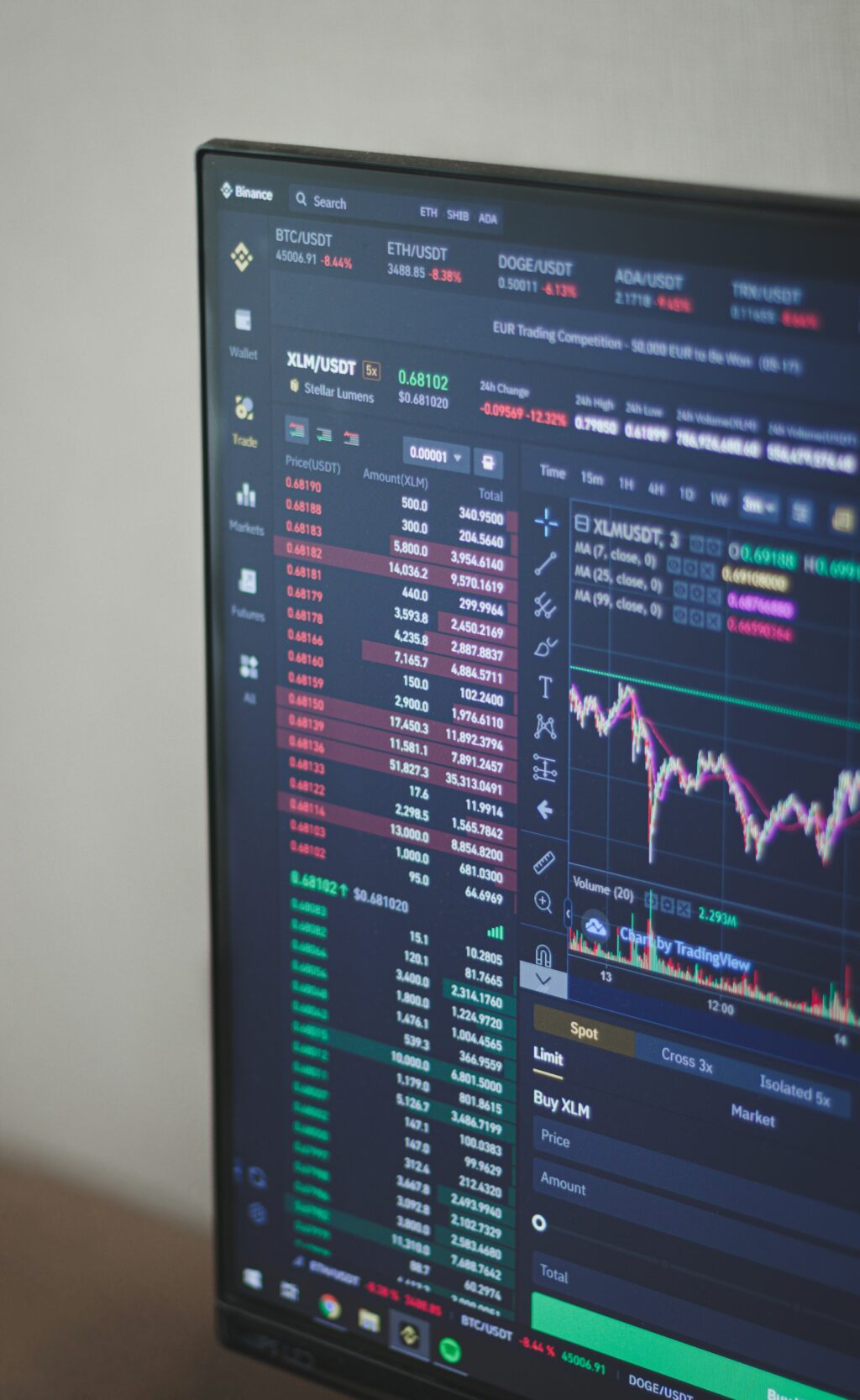
Welcome back to GLHR Investing, your go-to source for navigating the ever-shifting tides of the financial markets. This week, from March 17 to March 23, 2025, has been nothing short of a roller-coaster ride for investors. Between geopolitical uncertainty, tariff turmoil, and surprising sector shifts, the stock market has kept us all on our toes. At glhrinvesting.com, we’re breaking down the top 10 events that defined this week, unpacking their key aspects, and analyzing how they’ve impacted investors—and why. Let’s dive in.
1. Stocks Bounce Back After a Month-Long Slump (March 17)
The week kicked off with a much-needed rebound as major indexes rose on Monday, March 17. The Dow Jones Industrial Average climbed 1.4%, while the S&P 500 and Nasdaq also posted gains. This came after a month of declines spurred by tariff fears and economic slowdown concerns. For investors, this bounceback offered a glimmer of hope, signaling that dip-buyers were stepping in. Why it matters: A sustained recovery could stabilize portfolios, but the rally’s fragility—tied to ongoing policy uncertainty—means cautious optimism is warranted.
2. Nvidia’s GTC Keynote Sparks Tech Rally (March 18)
Nvidia’s GPU Technology Conference (GTC) on March 18 was dubbed the “Woodstock of AI,” and CEO Jensen Huang didn’t disappoint. Updates on the Blackwell Ultra chip and Vera Rubin architecture reignited excitement in the tech sector. Nvidia’s stock surged, lifting the Nasdaq. Investors saw this as a reminder of tech’s long-term growth potential, particularly in AI. However, with the sector already pricey, the rally raised questions about overvaluation. Why it affects investors: Those holding tech stocks gained, but newcomers face a higher entry cost with bubble risks looming.
3. Fed Holds Rates Steady Amid Uncertainty (March 19)
The Federal Reserve’s two-day meeting concluded on March 19 with no change to the 4.25%–4.5% rate range. Fed Chair Jerome Powell cited “increased economic uncertainty,” particularly around Trump’s tariff policies, but maintained a 50-basis-point cut projection for 2025. Investors breathed a sigh of relief as rate-cut hopes stayed alive, boosting stocks like Boeing and Tesla. Why it matters: Stable rates support growth stocks, but prolonged uncertainty could dampen market momentum if inflation reaccelerates.
4. Tesla’s Selloff Extends as Musk’s Focus Shifts (March 17–20)
Tesla shares continued sliding this week, down 43% year-to-date by March 20. Investors grew jittery over Elon Musk’s deep involvement in Trump’s Department of Government Efficiency (DOGE), fearing it’s distracting him from Tesla’s ambitious self-driving and Cybercab goals. Why it affects investors: Tesla’s volatility tests long-term holders’ resolve while offering bargain hunters a potential entry point—if Musk refocuses. The stock’s decline reflects broader concerns about leadership bandwidth in high-growth firms.
5. Retail Sales Data Signals Consumer Pullback (March 17)
Early Monday brought weaker-than-expected retail sales data, showing consumers tightening belts after a strong holiday season. This fueled recession chatter, pressuring consumer discretionary stocks. For investors, it’s a red flag that economic growth may be slowing, impacting firms reliant on spending. Why it matters: A cautious consumer could drag down earnings, especially for retail and luxury sectors, pushing investors toward defensive plays like utilities.
6. Stocks Soar on Tech Rally Led by Nvidia and Palantir (March 14, Recap Impacting Week)
Friday, March 14, saw the S&P 500’s best day of 2025, driven by Nvidia and Palantir. This momentum carried into our week, with tech rebounding from a month of losses. Investors who rode the wave saw gains, but the Nasdaq’s 4.9% weekly drop (as of March 14) underscores the sector’s volatility. Why it affects investors: Tech’s resurgence offers upside, but its outsized influence on indexes means a pullback could ripple widely.
7. MicroStrategy’s $722.5M Bitcoin Play (March 21)
On March 21, MicroStrategy boosted its Strife Perpetual Preferred Stock offering to $722.5 million to buy more Bitcoin. This move by Michael Saylor’s firm electrified crypto investors and lifted Bitcoin-related stocks. Why it matters: For equity investors, it highlights the growing intersection of stocks and crypto, offering exposure to digital assets via traditional markets. But if Bitcoin falters, these stocks could face sharp declines.
8. Utilities Shine as Data Center Demand Grows (March 17)
AES Corp. jumped 6.1% on March 17, buoyed by its role in powering energy-hungry data centers. With big tech driving 40% of its backlog, utilities emerged as a sleeper hit. Investors seeking stability found a bright spot here amid tech’s turbulence. Why it affects investors: Rising energy needs bolster utilities’ growth outlook, making them a defensive yet promising play in a choppy market.
9. Tariff Uncertainty Weighs on Sentiment (Ongoing, Peaking Midweek)
Trump’s on-again, off-again tariff threats—particularly against Canada, Mexico, and China—kept markets on edge all week. The S&P 500’s 2.7% drop on March 10 (a prior low) lingered in investors’ minds, with fears of inflation and slower growth. Why it matters: Tariffs could squeeze margins for global firms, hitting industrials and consumer cyclicals hardest, while uncertainty delays investment decisions.
10. Housing Data Offers Mixed Signals (March 19–20)
Housing starts rose 11.2% in February (reported midweek), but existing home sales growth of 4.2% was tempered by a year-over-year decline. Investors in real estate and related sectors saw opportunity in supply growth, yet high rates continue to stifle demand. Why it affects investors: A sluggish housing market could signal broader economic weakness, nudging portfolios toward safer assets like bonds or REITs with strong fundamentals.
The Big Picture for Investors
This week underscored the market’s sensitivity to policy, tech leadership, and economic data. Investors face a dual reality: opportunities in beaten-down sectors like tech and housing, balanced against risks from tariffs and consumer slowdowns. Volatility, as seen in the CBOE Volatility Index (VIX) hovering above 20, suggests a bumpy road ahead. At GLHR Investing, we advise diversifying across defensive (utilities, healthcare) and growth (tech, crypto proxies) assets while keeping cash ready for dips. Why? The interplay of Fed policy, Trump’s agenda, and global shifts means adaptability is key.
Bonus: Top 5 Undervalued Stocks Today (March 23, 2025)
Looking for value in this storm? Here are five undervalued stocks we’re eyeing at glhrinvesting.com, based on low P/E ratios, strong fundamentals, and growth potential:
- Spyre Therapeutics Inc. (SYRE) – Biotech with a P/E of ~1.07, poised for gains as pre-clinical trials advance.
- ZIM Integrated Shipping Services Ltd. (ZIM) – Shipping stock with a low P/E and high dividend yield, undervalued amid global trade shifts.
- Korea Electric Power Corp. (KEP) – Utilities play trading cheaply despite steady demand, a safe haven.
- International Seaways (INSW) – Energy shipping firm with a P/E of 3.6, offering upside if oil markets tighten.
- Danaos Corp (DAC) – Container shipping stock at a P/E of 3.2, with a 4.1% yield and growth potential.
These picks blend income and appreciation potential, ideal for value hunters. Stay tuned to GLHR Investing for more insights as we track these trends into next week! Visit glhrinvesting.com for the latest updates.








